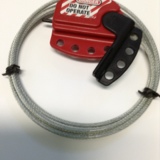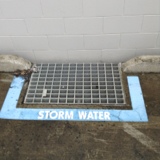Information
-
Fatigue Risk Assessment Tool
-
Person Being Assessed
-
Occupation / Work Area
-
Conducted on
-
Site
-
Assessment Conducted By
-
In the last 24 hours, how much sleep have you had?
-
In the last 48 hours, how much sleep have you had?
-
In the last 7 days, how many consecutive nights sleep have you had?
-
In the last 7 days, how many hours have you worked?
-
Over the last 7 days, how many days free from work have you had?<br><br>A day free from work is a day away from the workplace where no work tasks were completed
-
Over the last 7 days, how many days have you been on call?
-
How long will your current shift be?
-
How long was your last rest period from work?<br><br>A rest period from work is time away from the workplace where no work tasks were completed
-
In the last 7 days, how many night shifts have you completed?
-
What rest breaks have you taken during your current shift?
-
What working environment will you be exposed to?<br><br>Consider environments that are controlled (ie office) or harsh environments such as extreme temperatures, high risk work, noisy, harsh conditions. <br><br> <br>
-
What type of physical work tasks will you be completing?<br><br>Physicals tasks can include but are not limited to repetitive, physically demanding tasks.
-
What type of mental work tasks will you be completing?<br><br>Mental tasks can include but are not limited to tasks that require concentration, decision making or detailed monitoring
-
TOTAL POINTS
Low Risk - Fatigue Score up to and including 19 points - Implement Level 1 controls
Medium Risk - Fatigue Score 20 - 29 points - Implement Level 2 controls
High Risk - Fatigue Score 30+ or more points - Implement Level 3 controls -
RECOMMENDED CONTROLS
LEVEL 1 - Monitor for progression.
Scores in this zone are acceptable and present minimal risk. Fatigue management practices should where possible ensure that scores remain in the Green zone
LEVEL 2 - Self and buddy monitoring for symptoms, implement task rotation, monitor for progression.
Scores in this zone indicate a higher risk level, but still acceptable. However, management and individuals should take steps to reduce the risk level and that fatigue scores do not progress into the Red Zone threshold. Controls need to be put into place and monitored to verify their adequacy.
LEVEL 3 - Do not engage in safety critical tasks, Complete symptom/observation form, Organise supervisory checks, Arrange sleep opportunity, Transport home/offsite.
Scores in this zone would not normally be acceptable. In emergency or crisis situations the line manager may approve red zone operations to the minimal extent necessary and providing that additional control strategies are in place and monitored hourly.
-
INSERT RISK MANAGEMENT CONTROLS OR COMMENTS (if these have been implemented at assessment stage)
-
Assessors signature
-
Add signature
-
Acknowledgement of person being assessed
-
Add signature















